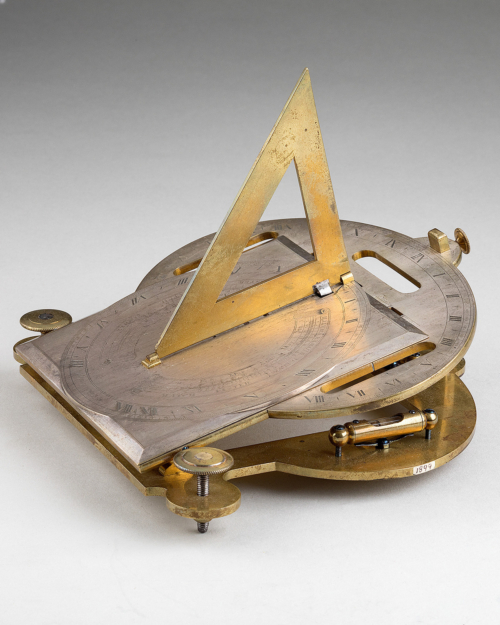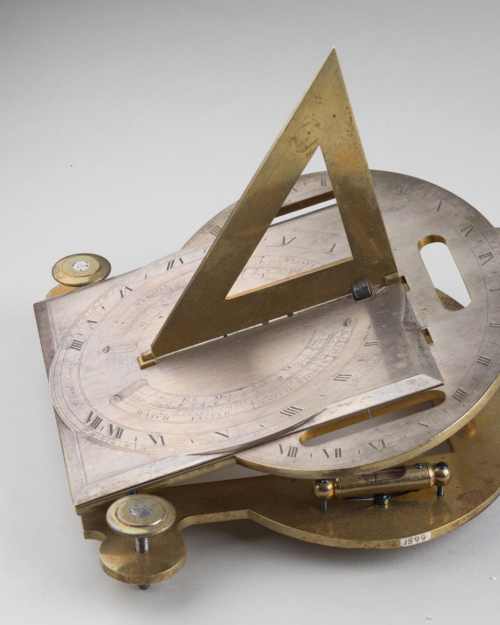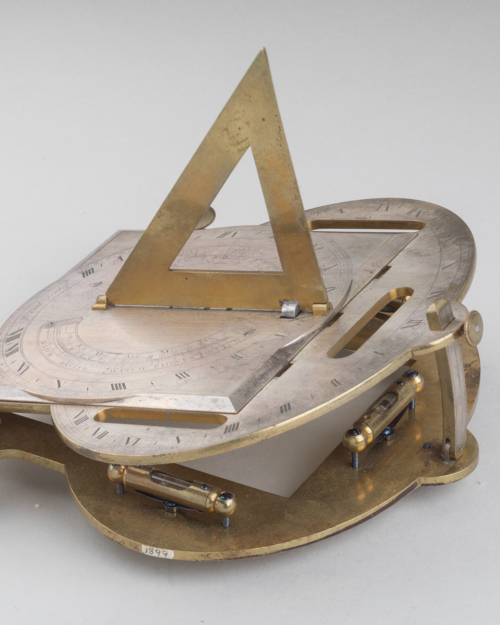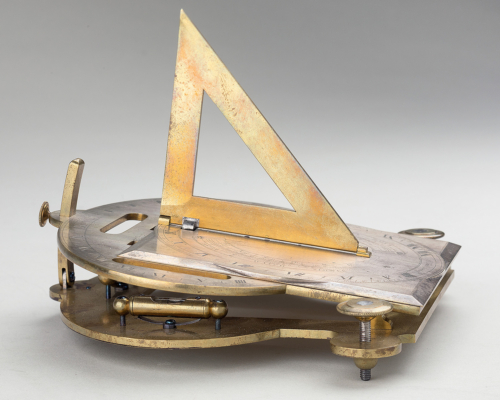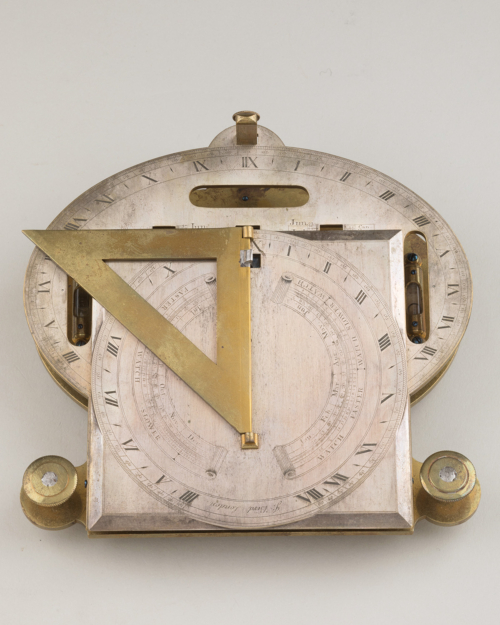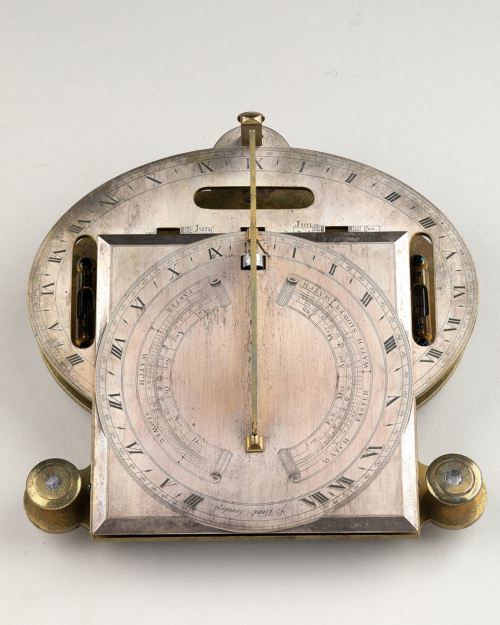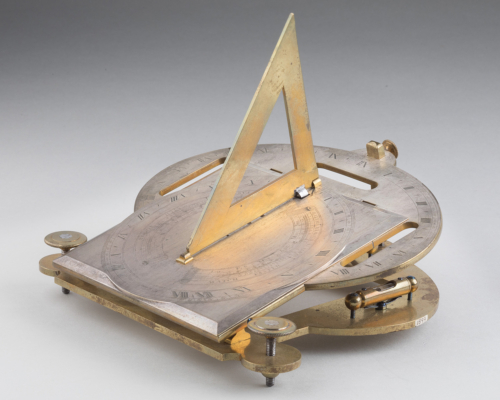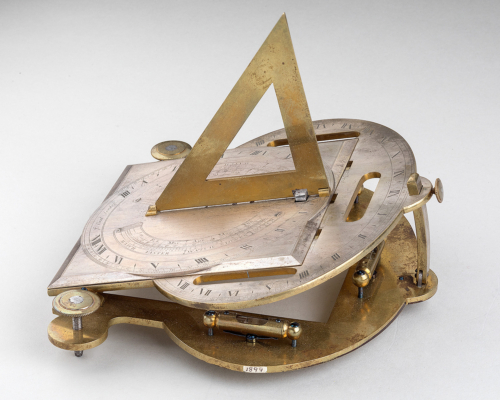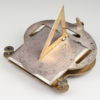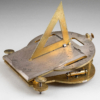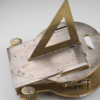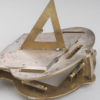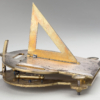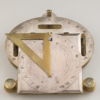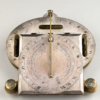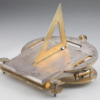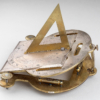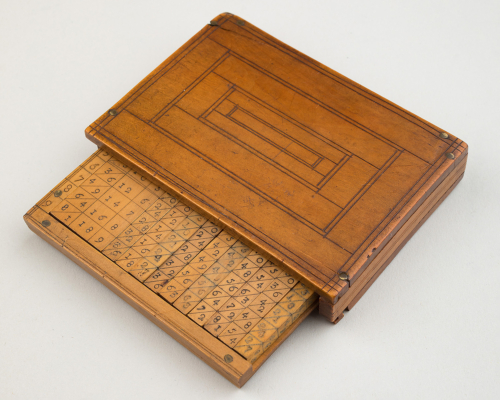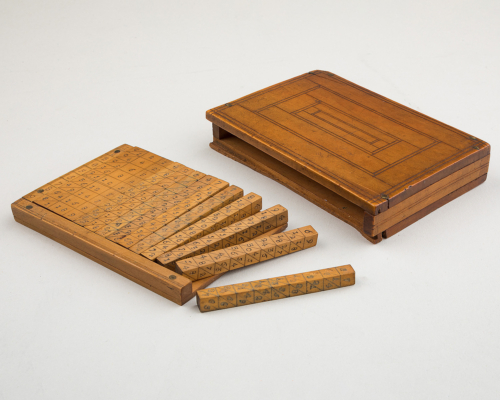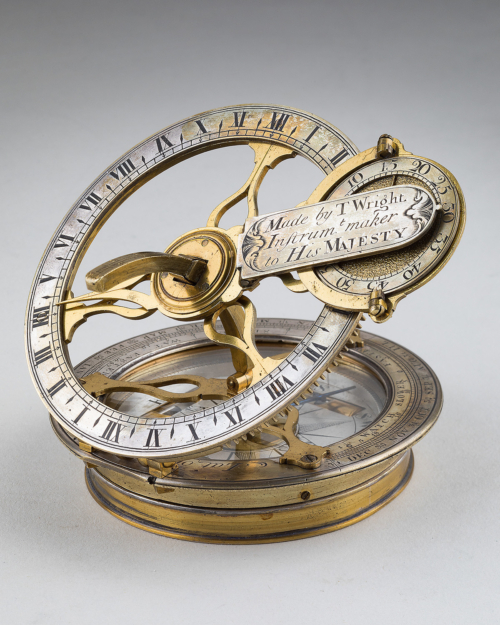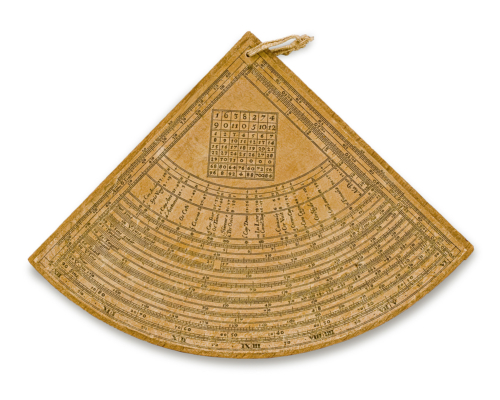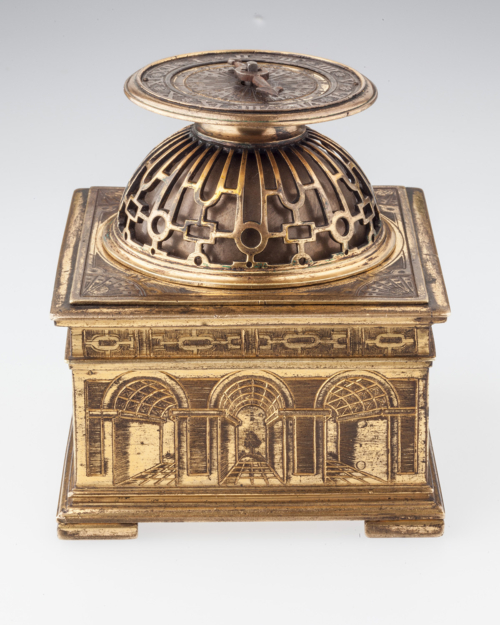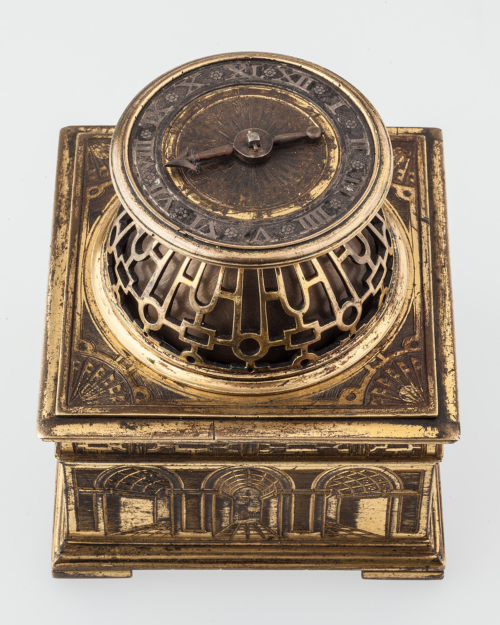| Height | 6⅔ by 5¾ inches |
| Provenance | The Time Museum, Rockford, Illinois, USA, inventory no.1899; Sotheby’s, October 2002, lot 24, sold for £23,441; John C Taylor Collection, inventory no.107. |
| Literature | G Clinton, Directory of British Scientific Instrument Makers, 1550-1851, London, 1995, p.30 C D Hellman, ‘John Bird, 1709-1776, mathematical instrument maker in the Strand’, Isis, XVII, 1983, p.127-53 |
| Exhibited | c.1985-1999, The Time Museum, Rockford, Illinois, USA |
| Notes | Signed J: Bird London with central cut-out to the shaped base-plate standing on one fixed and two screw-adjusting feet, the hinged dial-plate of an ellipse, with a superimposed square, fixed via two trunnions at one end of the base-plate, and set for latitude against a curved, hinged strut divided for latitudes 40-60 degrees, reading to 30 degrees and passing through the opposite end of the dial-plate whose elliptical edge bears an hour scale (IIII-XII-VIII) reading to two minutes, there being a second, circular, hour scale (similarly divided) to the superimposed square, and within that an equation of time table, over which is mounted the spring-loaded, hinged gnomon of solid triangular form. |
Exhibit № 36: John Bird, London. Circa 1745
A good George II brass and silvered brass inclining analemmatic dial
£25,000
John Bird was born at Bishop Auckland, co, Durham, where (while engaged in the weaving trade) he learnt precision dividing, before moving to London in 1740. Initially, for some five years, he worked for other makers, including Sisson and George Graham, before establishing his own workshop. Best known for large, observing instruments and for precisely divided scales on a group of early sextants, he also made smaller instruments, such as the present instrument, but they are comparatively rare. His customer base was international, so that by his death his instruments were to be found in many of the major observatories of Europe.
Instruments such as this are not fitted with a magnetic compass as they are self-orientating: once correctly set for latitude and levelled, the dial is turned until the gnomon shadow indicate the same time on both hour scales. This is, naturally, local solar time, and the dial when so registering is orientated in the meridian, so operating as a combined time and direction indicator.
Product Description
John Bird was born at Bishop Auckland, co, Durham, where (while engaged in the weaving trade) he learnt precision dividing, before moving to London in 1740. Initially, for some five years, he worked for other makers, including Sisson and George Graham, before establishing his own workshop. Best known for large, observing instruments and for precisely divided scales on a group of early sextants, he also made smaller instruments, such as the present instrument, but they are comparatively rare. His customer base was international, so that by his death his instruments were to be found in many of the major observatories of Europe.
Instruments such as this are not fitted with a magnetic compass as they are self-orientating: once correctly set for latitude and levelled, the dial is turned until the gnomon shadow indicate the same time on both hour scales. This is, naturally, local solar time, and the dial when so registering is orientated in the meridian, so operating as a combined time and direction indicator.
Additional information
| Dimensions | 5827373 cm |
|---|


